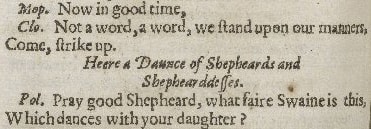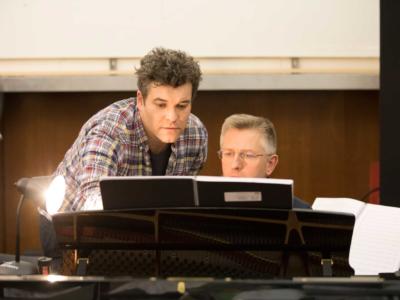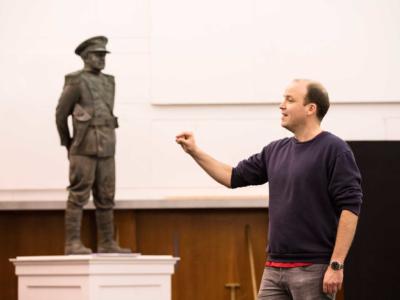The Text
The opera The Winter’s Tale was written and composed by Ryan Wigglesworth, after William Shakespeare’s play.
Read more about:
Shakespeare’s play
Shakespeare wrote The Winter’s Tale between 1609-11 and the play had its first performance at The Globe theatre on 15 May 1611. As in many of Shakespeare’s works, there are references to music throughout the narrative, making it a natural text for an operatic adaptation.
‘It almost demanded a musical treatment in order to make sense of its pivotal moments.’
— Ryan Wigglesworth
In his play, Shakespeare creates a world called Bohemia where singing and dancing have a natural place in the gentle countryside, as if the presence of music is made possible by Bohemia’s freedom of emotions, relationships and identities. In Act 5, music plays a special role in the surprise unveiled by Paulina, suggesting that music has the power of regeneration.

Second Folio of The Winter’s Tale, 1632.
The themes
![Source: [Public domain], via Wikimedia Commons. King James I in Parliament, by Reginold Elstracke Source: [Public domain], via Wikimedia Commons.](https://www.eno.org/wp-content/uploads/2017/01/King-James-I-in-Parliament.jpg)
The other main theme in the play is the juxtaposition of different worlds. Shakespeare used many of his writings to comment upon the differences between the busy, over-populated city of London where he worked and the gentleness of rural life in his family home in Stratford-Upon-Avon. In The Winter’s Tale, the freedoms to love and live peacefully that are inherent in the wild natural world of Bohemia contrast with the strictly controlled kingdom of Sicilia and its hierarchical structures of kingship.
These themes of stark contrasts and political tension remain urgent in the contemporary world and underlie the choices made by the creative team on this new production.
The libretto
Ryan Wigglesworth wrote the libretto for the opera, and relished the opportunity to reinvent Shakespeare’s language into a musical framework. Doing so, however, created its own challenges for the composer. Words take much longer to sing than to speak, and a libretto needs to leave space for the musical storytelling.
‘Shakespeare’s language is knotty and complex, deliberately so. In the case of a character like Leontes, when the madness burgeons that’s how it manifests itself, in an incredibly labyrinthine language. The iambic pentameter of the lines is too long, the thoughts are too long. I needed to cut the individual lines to get the essence, but at the same time to keep the colour. I began by snipping away and creating something very skeletal, then I started to flesh out the words when I came to compose. It’s the nature of a successful libretto to feel inadequate and naked on the page. So with Shakespeare, which is so opulent and complete, I felt I had to overcompensate, cutting down and allowing space for the music to function.’
— Ryan Wigglesworth
The play’s five acts have been reshaped into three for the opera, with some of the play’s most anticipated lines removed, allowing the music to create the atmosphere and emotions evoked by these famous words. The big set-pieces of the play – Hermione’s trial, the storm, the passing of sixteen years, and the final statue scene – remain the dramatic pillars around which the opera is built.

| Second Folio of The Winter’s Tale, 1632 . | Libretto The Winter’s Tale © Ryan Wigglesworth |
Find out more about Shakespeare’s life and times.



